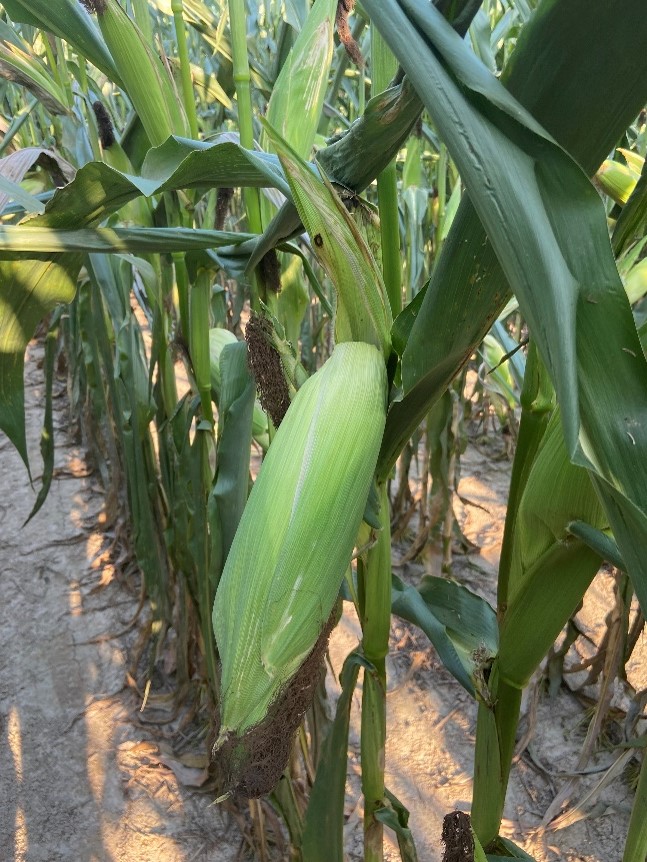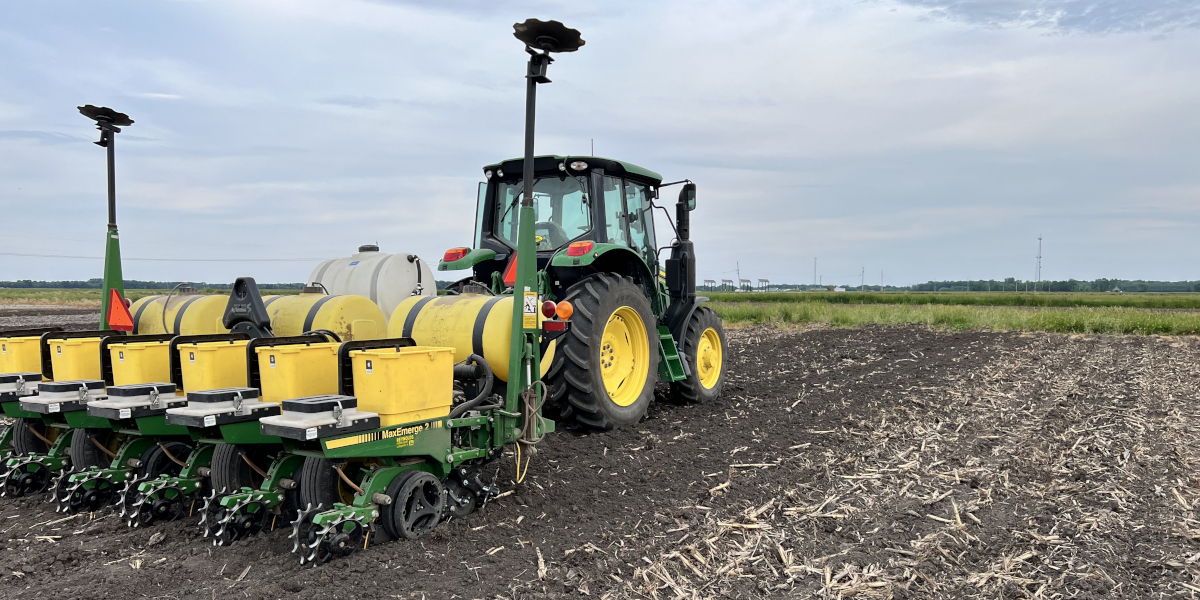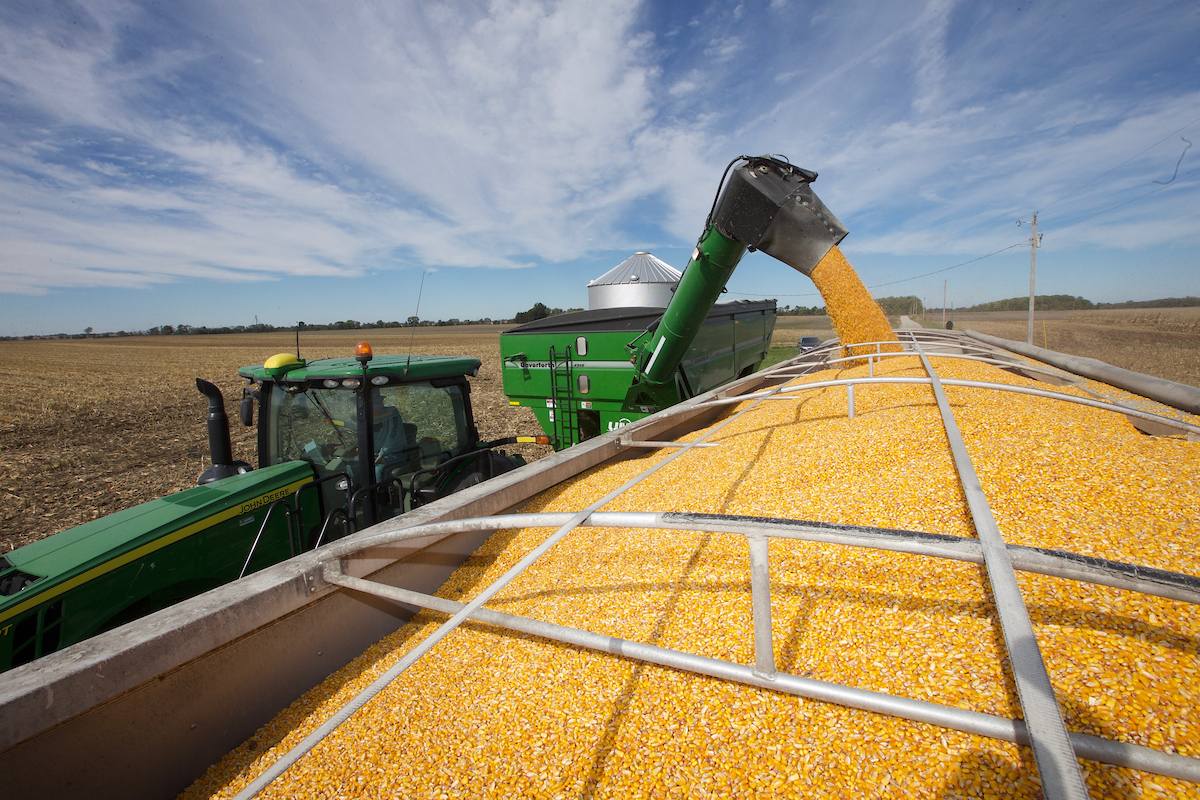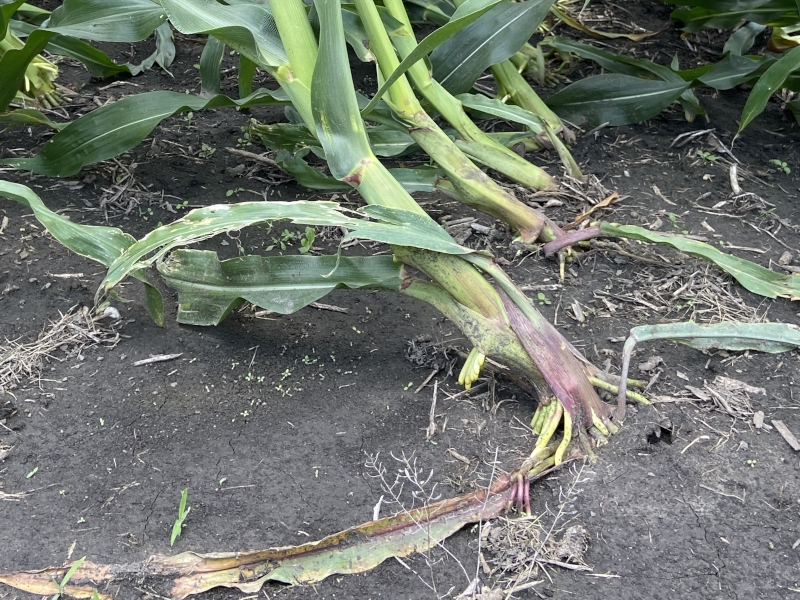Droopy Ears? – Understanding Premature Ear Drop in Corn
As corn advances through grain fill and approaches physiological maturity (black layer), one thing to watch for is premature ear declination or premature “ear drop” (Figure 1). Premature ear drop in corn can be a significant issue when the ear shank begins to collapse (Figure 2) and the ear drop occurs before the plant reaches maturity. Whereas, when the ear drop occurs after physiological maturity this is normal and ideal to avoid potential issues with rainfall and rewetting of kernels.

Figure 1. Premature ear drop symptoms on drought stressed corn plants in Jennings County, Indiana. 2021.
The most common factor for causing this issue is significant drought stress, specifically occurring in the later stages of corn grain fill. Many areas in Indiana, particularly in the eastern and southwestern parts of the state this year have experienced hot and dry conditions during late August and early September, which has resulted in the observance of premature ear drop within various field locations. The collapsed or “kinked” ear shank (Figure 2) causing the droopy ears suggests a loss of turgidity in the ear shank and potentially some cannibalization of the ear shank tissues due to photosynthetic stress, thus causing the ear to drop too early.

Figure 2. Collapsed or “kinked” ear shank resulting in premature ear drop on drought stressed corn plants in Jennings County, Indiana. 2021.
The main question when this issue is observed is always how much will this impact corn yield? The answer to this question can be challenging and it is also a function of 1) when did the premature ear drop occur during grain fill? and 2) how restricted is the ear shank when the ear drop occurred? As an example, I often think of the ear shank similar to a garden hose and instead of transporting water, it is transporting photosynthates into the ear which are essential for optimum grain fill. Therefore, if a garden hose is “kinked” or restricted, water transport can be severely limited or even stopped, which also means a collapsed ear shank can severely limit or even stop the transportation of photosynthates into the ear, thus restricting grain fill.
One method to determine yield loss severity due to premature ear drop is to pull some ears and assess how close they are to physiological maturity, or where the milk line is at on the kernel after the dent stage. If premature ear drop occurs at beginning full dent (milk line barely visible near the dent of the kernels) and grain fill is stopped, yield losses can be upwards of 30 – 40% for the impacted plant. Whereas, if this occurs at half milk line (milk line halfway between the dent of the kernel and the kernel tip), then yield loss for that individual plant may only be 10%. Using this method and getting an idea of the total amount of plants impacted throughout the field can help give you an estimate of what the potential yield impacts may be.
Dan Quinn, PhD
Assistant Professor of Agronomy
Extension Corn Specialist
Purdue University
djquinn@purdue.edu
Additional Resources:
Nielsen, R.L. 2020. Do your ears hang low? (Premature ear declination in corn).






